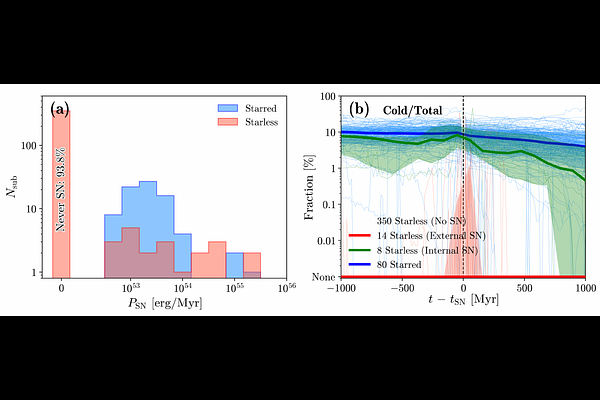Born to be Starless: Revisiting the Missing Satellite Problem

Born to be Starless: Revisiting the Missing Satellite Problem
Seyoung Jeon, Sukyoung K. Yi, Emanuele Contini, Yohan Dubois, San Han, Katarina Kraljic, Sebastien Peirani, Christophe Pichon, Jinsu Rhee
AbstractThe massive Local Group galaxies both host substantially fewer satellites than the subhalos expected from the cold dark matter paradigm, and the recent investigations have highlighted the interplay between baryons and dark matter. We investigate the processes that make subhalos starless, using high-resolution cosmological simulations. We found that the number of satellites around Milky Way analogs closely aligns with observations, which accords with recent studies. In our simulations, the majority of subhalos are devoid of stars, i.e., "starless." We first examined supernova feedback and the environmental effects associated with subhalos' orbital motion as candidates of origin. However, neither seems to be the main driver. Supernova feedback causes a reduction of cold gas in "starred" subhalos, but its impact is not significant. In the case of starless subhalos, supernova feedback is irrelevant because most of them do not have in-situ star formation in the first place. The orbital motion in dense environments causes gas removal in all subhalos but is not enough to remove pre-existing stars. The key is found to be the effect of reionization instead. Starless subhalos are initially born in regions that are less efficient in accreting matter. This makes them lack sufficiently dense gas to self-shield from UV background heating, preventing their gas from cooling below the star formation threshold. This indicates that starless subhalos are not made but born.